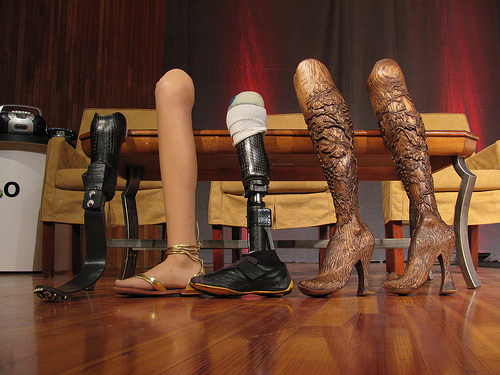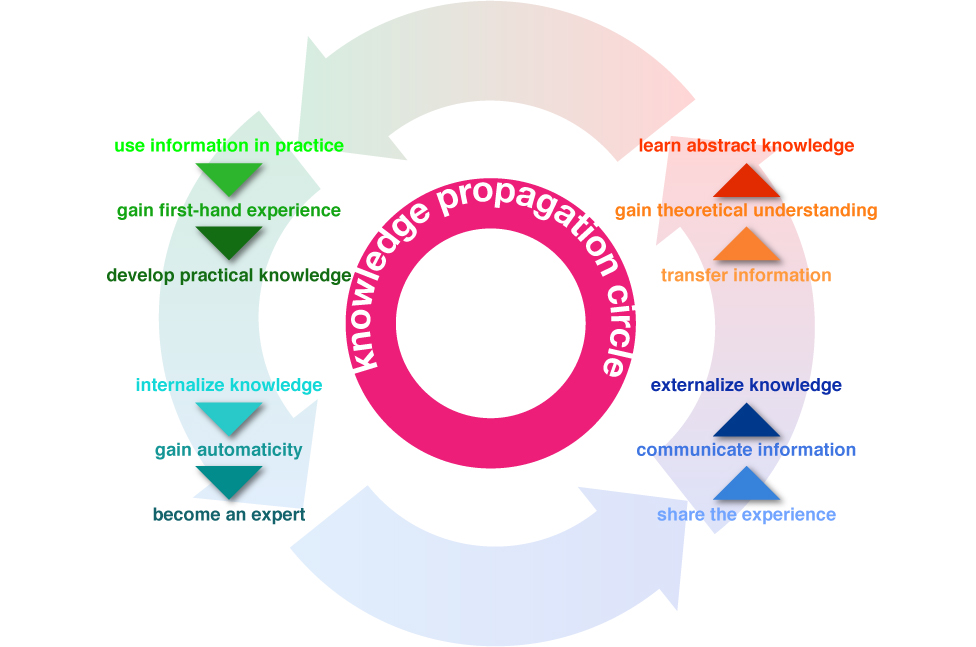Interfaces.com was given a free advanced preview of Thomas Erickson’s report and videos on social computing. The videos are very well produced and provide an interesting point of view and good insights on social media. Below are few of my notes based on the video content and ideas discussed on this blog in the past (my former students should find these familiar). Social Media Definitions & Ideas Social Computing: this is really about groups working together using ICT (Information Communication Technologies). I think this is a broader definition then the one offered by Thomas Erickson, as it includes all forms of ICT. Social Scaffolding: we all have a set of social scripts — culturally-specific, socially constructed norms of behavior — that help us navigate group interactions and allow for self-organization of crowds, at least shot-term and for a limited goal (like crossing the street). [Please watch Dr. Erickson’s example of street crossing in “Video 4.3: Social Computing video 3 – Face-to-face Interaction as Inspiration for Designing Social Computing Systems”.] Product design needs to create opportunities for social interaction — these scaffolds have to be built into the system: meeting spaces, places to sit down, well-lit areas, easy communication tools, games,…
Tag Archive for social processing
Conceptual Design, Cultural Bias, Interaction Design, Interface Design, Mental Model Traps, Pipsqueak Articles, Product Design Strategy
Design for Emotion, for Empowerment
by Olga Werby •

I use a cane to get around, a consequence of an unfortunate encounter with a taxi many years ago. I have many different canes (each heel size, for example, requires its own cane). All are cool. Some have animal carvings, some have silver, some have gold, some are complex in design, some are very Deco in style, and one has a sword (another a compass and a secret compartment). I get stopped on the street all the time — people love my canes and always comment. I was even told once that my limp is sexy — whatever… What I don’t have is an “old woman” cane — the kind you buy at a pharmacy. I’m just not that old, and plan never to be that old. I want funky, I want things that match my outfits and my moods. And I want them functional: the right hight, the right feel of the cane handle, the stability of the tip, the light weight, the structural security. I want it all and I want it sexy. Cane is a product — a very personal one. But most are stuck with poorly designed, boring, ugly, you-make-me-feel-like-an-invalid cane. Why? Aimee Mullins is a…
Conceptual Design, Cultural Bias, Cultural Differences, Ethnographic & User Data, Pipsqueak Articles, Users
Rewired Brain
by Olga Werby •

Our kids have grown up in the world where computers were always present and always on. They can’t conceive of a time when they can be cut off from the Internet (vacations in the Internet-dead zones are definite no go). Our kids are the generation of fully-connected always-on Internet users. What about the kids that are born right now? Not the Millennials, as they are being called, but these babies born in the age of the iPad? The iTouch Babies? How are their brains being rewired from the experience of having the iPad as their first toy? Check out this video of a baby girl growing in the iTouch World.
Background Knowledge, Background Knowledge Errors, Causal Net Problems, Cognitive Blindness, Conceptual Design, Cultural Bias, Cultural Differences, Ethnographic & User Data, Featured, Group Decision Errors, Mental Model Traps, Mirroring Errors, Pipsqueak Articles, Product Design Strategy
Community of Practice and Knowledge Propagation Circle
by Olga Werby •

This summer my family and I travelled to Rome. While the temperatures didn’t reach the usual astronomic heights, it was rather warm. But we, and other visitors, didn’t have to worry about thirst. Rome has the best network of public drinking fountains that I have ever seen. Every few blocks, there’s a beautifully-designed basin with a spigot of continuously running water (I know, being from California, the never-ending stream made us very uncomfortable, too). There are two bits of information that have to be passed on to the first-time visitors of Rome: the water is potable—safe to drink, and how to use the fountain—there’s a bit of a trick to them. Above is my son demonstrating a little secret interaction. There’s a small hole on the top of the pipe that can serve as drinking fountain if the main hole at the end is plugged up (with a finger). While we learned about the great drinking water in Rome from many traveling guides (books, online sites, etc.), we obviously didn’t know about the trick until we watched a pro do it. Knowledge Propagation Circle Information propagates through communities. When we first encounter a novel bit of data, it tends to…
Background Knowledge, Conceptual Design, Cultural Bias, Cultural Differences, Ethnographic & User Data, Pipsqueak Articles, Product Design Strategy
Cultural Differences from the 4th Dimension: Time
by Olga Werby •

Some cultural differences are brought to you by geographic distances, but some derive their wonderful exotic qualities from temporal separation. The ads below are all American…just from a different America—America of yesteryore. Role of Women What wives are for? Make her happy this Christmas—make it a hoover! Blow smoke in her face, she’ll love it! Go ahead and cry for it… Housework makes wives cute! Housework makes wives healthy. Healthy Kids Beer for mommies and babies… Give that baby a cola! Give your children the benefit of TV. Healthy You! Give cocaine a chance… Doctors prefer Camels. For a slimmer, flatter, more sinuous you, go with tape worms!
Conceptual Design, Interface Design, Pipsqueak Articles, Product Design Strategy
Creative Use of Media to Advance a Message
by Olga Werby •
Anchoring Errors, Background Knowledge Errors, Cognitive Blindness, Conceptual Design, Cultural Bias, Cultural Differences, Errors, Ethnographic & User Data, Metaphor Mistakes, Mirroring Errors, Pipsqueak Articles, Product Design Strategy
Lost in Translation: Cultural Differences in Advertising
by Olga Werby •
“Lost in Translation” was a wonderful movie by Sofia Coppola, starring Bill Murray and Scarlett Johansson. It depicted the delicious confusion of Western tourists in total Japanese cultural emersion. In particular, the scenes where Bill Murray shoots a liquor commercial for the Japanese market are simply priceless. In retrospect, I see where Ms. Coppola got her ideas. Her cousin, Nicholas Cage, have been making wonderfully odd (to our sensibilities) commercials for years. He clearly had stories to share. Here are a few of his gems, courtesy the World Wide Web: and But it’s not only Japan that surprises our/my cultural biases. This morning, my husband and I went to a local grocery store in Rome, Italy. In the cheese section, there was a little paper bottle of parmesan cheese with a mouse of the package. The mouse didn’t work for me at all! So much for cultural differences. Here’s a small collection of ads for McDonalds from all over the world. Please compare it to the packaging and menus for this restaurant chain that I’ve posted here in the past: “Cultural World Domination”. Notice all of the anchoring errors, metaphor mistakes, cultural biases, mirroring errors, and general cognitive and cultural…

